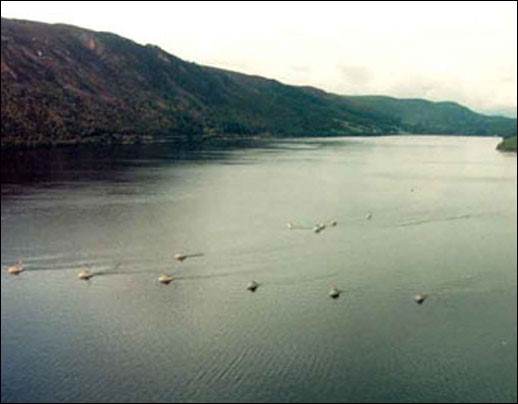A new investigation is set to take place on Loch Ness, this time using DNA-sampling in the bid to identify the existence of something large and unexplained living past or present in the murky depths.
It’s the latest in a long series of efforts to profile the Loch Ness Monster.
The world has had a fascination with Loch Ness since 1933, following the report in the Inverness Courier with the headline "Strange Spectacle on Loch Ness".
In 1934, the first major expedition to discover what is possibly dwelling in these deep dark waters was launched by Edward Mountain.
He financed the cost of recruiting 20 local men and equipping them with binoculars and cameras, positioned around the loch for five weeks to see what they would witness and duly record. Although 21 photographs were taken, none was conclusive.
Then, in 1962, the Loch Ness Phenomenon Bureau of Investigation was formed by Constance Whyte (author of the book "More than a Monster”), David James MP, and Peter Scott with others to determine and study Loch Ness and to attempt to identify what eye witnesses had been reporting.
Later changing its name to the “Loch Ness Investigation Bureau”, it encouraged like-minded people to self-fund expeditions to the loch and set up observation points with telescopes and cameras. This organisation disbanded in 1972 but still is remembered fondly around the area.
Many investigative surveys were also carried out by Dr Robert Rines in 1972, 1975, 2001, and 2008.
He came with researchers of various disciplines from the Academy of Applied Science, of Boston, Massachusetts.
The scientists conducted many underwater sonar and photographic experiments but, unfortunately, results were proved to be something else or were tampered with. For example, the so-called “Gargoyle Head” turned out to be a tree stump and can be seen in the Loch Ness Monster Exhibition, in Drumnadrochit.
Flotilla was equipped with sonar
One of the largest expeditions, Operation Deepscan, took place in October 1987. It featured a flotilla of 24 boats equipped with echo sounder equipment. They were deployed like a screen across the loch, bouncing sound waves from one boat to another and creating a curtain of coverage.
This was led by Adrian Shine, a scientist who is based at Loch Ness Exhibition Centre. They also failed to make contact with an unidentified object of unusual size and strength.
Now, the new expedition is to be launched at the beginning of June.
A global team of scientists led by Professor Neil Gemmell, of the University of Otaga, in New Zealand, will use Environmental DNA (eDNA) sampling of the waters to try to identify tiny DNA traces in the loch.
The team are hoping that the samples will establish a detailed list of life in the loch now and in the past and they will make comparisons between it and several other lochs.
Maybe the forensic science of today’s age will reveal something others have failed so surface. The truth is out there! We will keep you posted as the study progresses.

